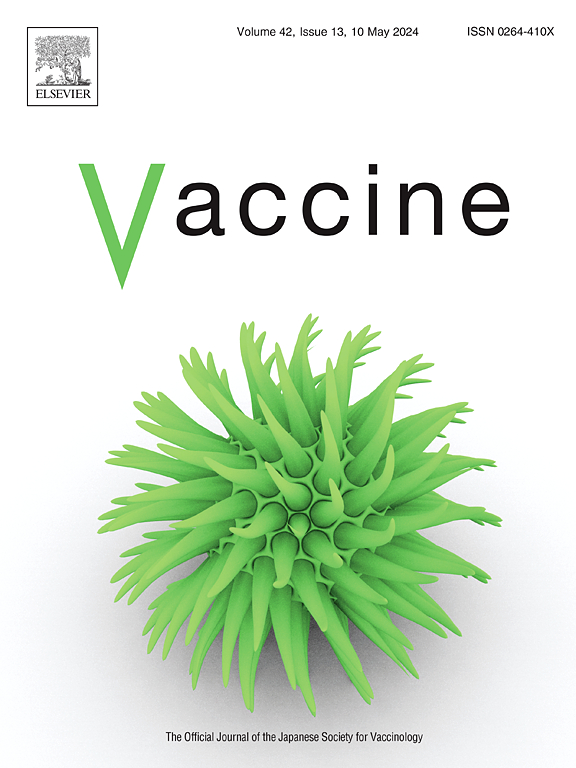Association between maternal influenza vaccination and childhood vaccination among participants of the 2015 Pelotas (Brazil) birth cohort
IF 4.5
3区 医学
Q2 IMMUNOLOGY
引用次数: 0
Abstract
Background
Influenza immunization during pregnancy is crucial to safeguarding maternal and fetal health, and is an established routine antenatal care practice. We aimed to identify the association of antenatal maternal influenza vaccination with childhood vaccination status at age 1 year and at 6–7 years of age in Brazil.
Methods
Prospective cohort study using data from mothers and children in the 2015 Pelotas Birth Cohort. Outcomes of interest included basic vaccination coverage at 1 year of age and DTP-poliovirus and influenza vaccination at 6–7 years of age. Influenza vaccination of women during pregnancy was the exposure variable. Poisson regression models were used to assess the relationship between maternal and child vaccination; prevalence ratios were obtained.
Results
Of the children included in the study, 77.2 % of them completed their routine vaccination schedules for the first year of life; at age 6–7 years, 59.9 % had complete DTP-poliovirus coverage and 40.7 % had received the influenza vaccine. Children whose mothers received the seasonal influenza vaccine during pregnancy were more likely to receive their basic first-year vaccines and the DTP-poliovirus and influenza vaccines at age 6–7 years.
Conclusions
Antenatal maternal influenza vaccination was associated with subsequent child vaccination.
2015年佩洛塔斯(巴西)出生队列参与者中母亲流感疫苗接种与儿童疫苗接种之间的关系
背景:怀孕期间接种流感疫苗对保护孕产妇和胎儿健康至关重要,是一种既定的常规产前保健做法。我们的目的是确定巴西1岁和6-7岁儿童接种流感疫苗状况与产前母亲接种流感疫苗的关系。方法前瞻性队列研究,使用2015年Pelotas出生队列的母亲和儿童数据。感兴趣的结果包括1岁的基本疫苗接种覆盖率和6-7岁的百白破脊髓灰质炎病毒和流感疫苗接种。妇女在怀孕期间接种流感疫苗是暴露变量。采用泊松回归模型评估孕产妇与儿童接种疫苗的关系;获得患病率。在纳入研究的儿童中,77.2%的儿童在出生后第一年完成了常规疫苗接种计划;在6-7岁时,59.9%的人接种了百白破-脊髓灰质炎病毒疫苗,40.7%的人接种了流感疫苗。母亲在怀孕期间接种季节性流感疫苗的儿童更有可能在6-7岁时接种基本的第一年疫苗和百白破脊髓灰质炎病毒和流感疫苗。结论孕妇产前流感疫苗接种与随后的儿童疫苗接种相关。
本文章由计算机程序翻译,如有差异,请以英文原文为准。
求助全文
约1分钟内获得全文
求助全文
来源期刊

Vaccine
医学-免疫学
CiteScore
8.70
自引率
5.50%
发文量
992
审稿时长
131 days
期刊介绍:
Vaccine is unique in publishing the highest quality science across all disciplines relevant to the field of vaccinology - all original article submissions across basic and clinical research, vaccine manufacturing, history, public policy, behavioral science and ethics, social sciences, safety, and many other related areas are welcomed. The submission categories as given in the Guide for Authors indicate where we receive the most papers. Papers outside these major areas are also welcome and authors are encouraged to contact us with specific questions.
 求助内容:
求助内容: 应助结果提醒方式:
应助结果提醒方式:


